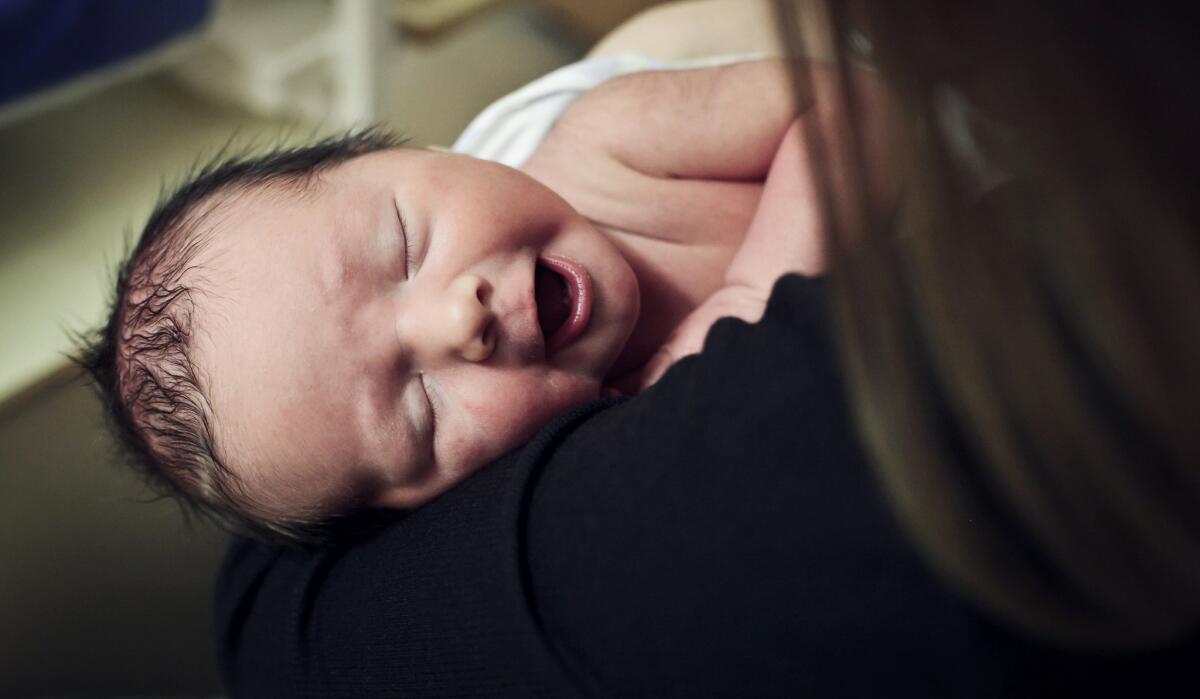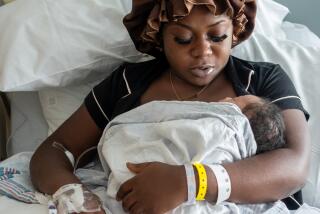Government shutdown may have led to spike in Washington births

- Share via
Reporting from Washington — Last October’s government shutdown left 800,000 federal employees without work for 16 days, but apparently they found ways to occupy their time.
Nine months later, some Washington, D.C., hospitals are reporting a spike in newborns.
“There’s no way to scientifically prove there’s a cause and effect…[but] when you see an unusually sharp increase in the number of births and it correlates to something that affected tens of thousands of people in your catchment area, you think ‘Hmm,’” said Gary Stephenson, spokesman for Sibley Memorial Hospital.
Sibley says it is averaging about three more births a day, compared with this time last year. Yulette Newman, a Sibley hospital nurse, predicted last year on her Facebook page that the region would experience a mini-boom of what she called “furlough babies.”
“Many of us [were] sitting around and talking,” Newman said. She recalled thinking, “We’re in the D.C., Virginia area. There might be a lot of parents who work for the government. They’re not going to spend money. They want to stay home and entertain themselves. What better entertainment than to see a blessing nine months down the road?”
New mother Kimberly West, who gave birth at Sibley on Monday, described her newborn son, Benjamin, as a “shutdown baby.” Before the shutdown, she and her husband, a program specialist at the Peace Corps’ Office of Strategic Partnerships, were already thinking about starting a family. West said the timing of the shutdown “just worked out.”
“I think it’s really funny, but it kind of makes perfect sense,” she said about the spike in births. “People are around and have more time.”
The 16-day shutdown occurred after partisan bickering over the Affordable Care Act led Congress to miss a deadline to authorize government spending.
Other emergencies and crises have triggered baby booms because parents were forced to stay indoors, such as Hurricane Ike in 2008 and Superstorm Sandy in 2012. Some studies showed higher birth rates after the 1995 Oklahoma City bombings.
Critics say these baby booms are myths exaggerated by the media. Reports of a surge in births after the 1965 New York City power outage were later questioned by researchers.
Some hospitals in the Washington area say they are not noticing the trend. Both George Washington University Hospital and MedStar Georgetown University Hospital have not experienced changes in birth rates compared with last July, according to hospital spokesmen.
But Stephenson said that Sibley delivers more babies than any other hospital in the capital and is therefore more likely to detect a spike.
“We’re kind of ground zero for births,” he said. “My educated guess is that if you were to see a bump [in births], the largest impact would occur here.”
Sam Sturgeon, president of Demographic Intelligence, a fertility forecasting firm, said the federal shutdown could be a plausible reason for the rise in births, but most likely affected the timing of births rather than the number.
“It’s not that additional children get born, but couples that are planning to have a child may have more opportunities to conceive,” he said.
More to Read
Sign up for Essential California
The most important California stories and recommendations in your inbox every morning.
You may occasionally receive promotional content from the Los Angeles Times.













